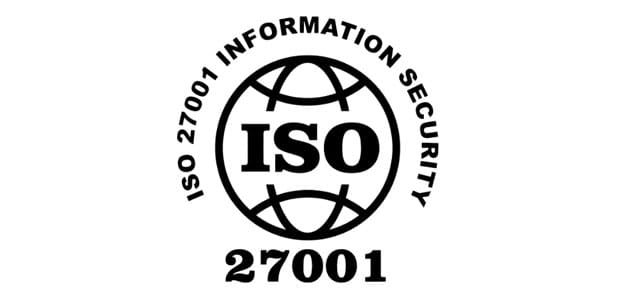The Importance of Cybersecurity
Cybersecurity is of paramount importance in today’s digital world. With the increasing reliance on technology and the interconnectedness of networks, the potential for cyber threats has grown significantly. Cybersecurity plays a critical role in protecting sensitive information, such as personal data, financial records, and intellectual property, from unauthorized access, data breaches, and cyberattacks.
The importance of cybersecurity lies in its ability to protect individuals, businesses, and governments from the devastating consequences of cyber threats. A successful cyberattack can lead to financial losses, reputational damage, legal consequences, and disruption of critical services. Cybersecurity measures help prevent such incidents, ensuring the confidentiality, integrity, and availability of data and systems.
In addition to protecting digital assets, cybersecurity also promotes trust and confidence in online interactions. Both businesses and their customers must feel confident that their transactions, communications, and sensitive data are secure from malicious actors. A robust cybersecurity framework bolsters this trust, encouraging e-commerce, digital innovation, and the adoption of new technologies.
Common Human Errors in Cybersecurity: Understanding the Risks
In today’s digital landscape, cybersecurity has become a paramount concern for individuals and organizations alike. While advancements in technology have brought about numerous benefits, they have also exposed us to unprecedented Cyber Risks. Although sophisticated cyber threats are a major concern, it is important to recognize that one of the weakest links in the cybersecurity chain is often human error. Despite robust security measures, human mistakes can compromise data, systems, and networks, leading to potentially devastating consequences.
Phishing and Social Engineering Vulnerabilities
Phishing attacks remain one of the most prevalent and successful cyber threats. These attacks often rely on exploiting human emotions, curiosity, or urgency to trick individuals into revealing sensitive information or downloading malware. Clicking on malicious links, responding to suspicious emails, or divulging personal details can grant attackers access to valuable data. Employees must be educated about the dangers of phishing and social engineering tactics to prevent falling victim to these deceptive techniques.
Weak Passwords and Credentials
Human tendency to use weak passwords or reuse the same passwords across multiple accounts creates significant cybersecurity vulnerabilities. Passwords like “123456” or “password” are easily guessable, making it easier for attackers to gain unauthorized access to systems. Organizations must promote the use of strong, unique passwords and implement multi-factor authentication (MFA) to bolster security and reduce the risk of credential-related attacks.
Lack of Awareness and Training
Many cybersecurity incidents are a result of inadequate awareness and training among employees. Employees may unknowingly download malware, visit malicious websites, or fall for social engineering attacks due to a lack of cybersecurity knowledge. Regular and comprehensive security awareness training is crucial to empower individuals to recognize and respond appropriately to potential cyber threats.
Insider Threats:
Insider threats pose a significant risk to organizations as individuals with authorized access can intentionally or unintentionally compromise security. Employees may accidentally share sensitive information, fall victim to phishing attacks, or engage in malicious activities, leading to data breaches or system compromises. Implementing strict access controls, monitoring user activities, and conducting thorough background checks can help mitigate the risks associated with insider threats.
Improper Handling of Sensitive Data
Human errors related to the mishandling of sensitive data can lead to severe consequences. Accidentally sending confidential information to the wrong recipient, leaving sensitive documents unattended, or using unauthorized cloud storage services are examples of errors that can result in data leakage. Organizations must enforce data protection policies, educate employees about data handling best practices, and implement encryption and access controls to safeguard sensitive information.
Neglecting Software Updates
Failing to update software and operating systems in a timely manner is a common human error that leaves systems vulnerable to known exploits. Attackers often exploit software vulnerabilities to gain unauthorized access or launch attacks. Regularly updating software and promptly applying security patches is essential to ensure that systems are protected against known vulnerabilities.
Unauthorized Use of Personal Devices
The increasing trend of employees using personal devices for work (Bring your own device – BYOD) introduces additional security risks. Unsecured personal devices may lack proper security measures, making them susceptible to malware and unauthorized access. Organizations should establish clear BYOD policies, enforce security standards, and implement mobile device management (MDM) solutions to mitigate the risks associated with personal device usage.
Understanding the risks posed by common human errors in cybersecurity is paramount in building a robust defense against cyber threats. While technological solutions are essential, it is crucial to recognize that human behavior plays a significant role in cybersecurity. Security awareness training, robust password policies, data protection measures, and strict access controls are vital in empowering individuals to become proactive defenders against cyber threats. By addressing human errors, organizations can strengthen their cybersecurity posture, protect sensitive data, and safeguard their digital assets in an increasingly interconnected world.
The Importance of Mitigating Human Errors in Cybersecurity and Compliance
In the ever-evolving digital landscape, cybersecurity and compliance have become critical components for safeguarding sensitive information and maintaining the integrity of data and systems. While technological advancements have strengthened cybersecurity defenses, one of the weakest links remains human errors. Employees are susceptible to making mistakes that can compromise security, leading to data breaches, financial losses, and reputational damage. Recognizing the significance of mitigating human errors in cybersecurity and compliance is essential for creating a robust defense against cyber threats.
Despite the implementation of advanced security technologies, human errors persist as the primary vulnerability in cybersecurity. Employees may inadvertently click on phishing emails, neglect to update software, use weak passwords, or mishandle sensitive data. These errors can grant cybercriminals unauthorized access to systems and networks, making it imperative to address human behavior as a key factor in mitigating cybersecurity risks. Inadequate data handling practices can lead to compliance violations and data breaches. Employees who mishandle sensitive information or share data with unauthorized parties inadvertently put organizations at risk of regulatory non-compliance and potential legal consequences. Proper data classification, access controls, and security training are essential in mitigating human errors that may lead to data mishandling.
Strengthen Your Compliance Against Human Errors
Comprehensive security awareness training is a cornerstone in mitigating human errors in cybersecurity and compliance. Educating employees about the latest cyber threats, best practices, and organizational policies equips them with the knowledge and skills needed to make informed decisions and avoid security pitfalls. Ongoing training and regular updates ensure that employees stay abreast of the rapidly evolving cyber landscape.
Establishing clear and enforceable security policies is essential in mitigating human errors. Strong password policies, data protection guidelines, and acceptable use policies for personal devices and cloud services help employees understand their responsibilities in maintaining a secure environment. Consistently enforcing these policies reinforces a security-conscious culture within the organization.
Even with robust preventive measures, human errors can still occur. Having a well-defined incident response plan allows organizations to respond promptly and effectively to security incidents, minimizing the impact on data and systems. Conducting thorough post-incident analyses and implementing lessons learned from past mistakes can strengthen security measures and reduce the likelihood of future errors.














